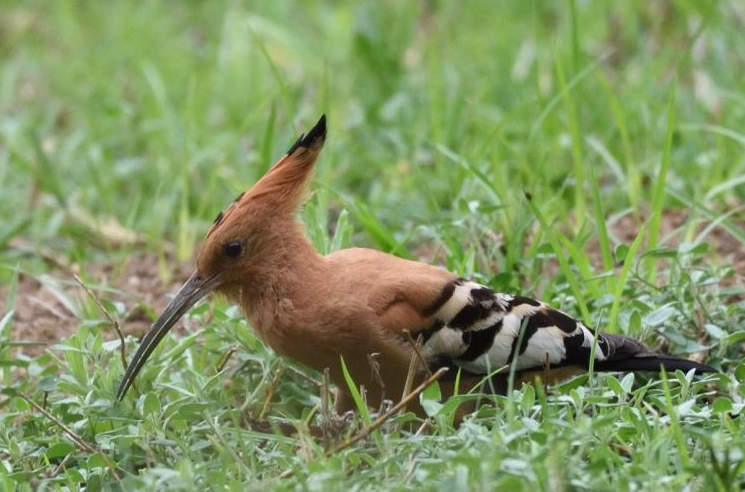LC de Villiers Sports Grounds : birding, endemics, habitats, access and facilities
LC de Villiers Sports Grounds, located near the University of Pretoria, is a lesser-known but rewarding birdwatching spot in the heart of an urban area. Despite its primary function as a sports facility, the grounds and surrounding areas provide habitats for a variety of bird species. Here’s a guide to birding at LC de Villiers Sports Grounds, including information on endemic species, birding habitats, seasonal tips, travel information, and access to facilities.
Birding at LC de Villiers Sports Grounds
Endemic and Notable Bird Species
Although LC de Villiers is primarily a sports facility, the surrounding green spaces, trees, and water features attract a number of bird species, some of which may be endemic or regionally significant. Common species you might encounter include:

- Hadeda Ibis
- Speckled Pigeon
- Cape Sparrow
- Red-winged Starling
- African Hoopoe
- Southern Masked Weaver
- Cape White-eye
- Common Fiscal
- Laughing Dove
- Crested Barbet
These species are generally common in urban and suburban areas of Pretoria, but their presence adds to the diversity and interest for birdwatchers.
LC de Villiers Sports Grounds Birding Habitats
LC de Villiers Sports Grounds encompasses various habitats that attract different types of birds:
- Grasslands and Sports Fields: The large open spaces of sports fields provide habitat for ground-feeding birds like ibises, lapwings, and various pigeons and doves. These areas are often active with birds early in the morning.
- Woodlands and Trees: The scattered trees and small patches of woodland around the sports grounds offer shelter and nesting sites for species like barbets, woodpeckers, and weavers. These areas are also good for spotting smaller passerines.
- Water Features: Any small ponds or drainage areas within the grounds can attract waterbirds, especially after rain. These spots are worth checking for species like herons, egrets, and ducks.
Seasonal Birding Tips
Summer (November to February)
- Migratory Birds: Summer is a good time to spot migratory species that may pass through or temporarily settle in the area. Early mornings and late afternoons are best for observing bird activity during the hotter months.
- Breeding Season: Many resident birds breed during this period, and you may observe nesting, feeding of young, and other breeding behaviors.
Autumn (March to May)
- Transition Period: As migratory birds start to leave, the focus shifts back to resident species. The weather is cooler, making it a pleasant time for birdwatching.
Winter (June to August)
- Resident Birds: The winter months might see less bird activity overall, but resident species like sparrows, weavers, and doves remain active. Raptors may also be more visible during this time.
- Quiet Time: With fewer human activities at the sports grounds, winter can offer a quieter birdwatching experience.
Spring (September to October)
- Return of Migrants: As spring arrives, migratory birds begin to return, and resident species become more active. This season offers a lively birdwatching experience with many birds preparing for the breeding season.
Travel Information
Access and Facilities
- Location: LC de Villiers Sports Grounds is located in Hatfield, Pretoria, near the University of Pretoria. It is easily accessible by road and public transport from various parts of the city.
- Access: The sports grounds are generally open to the public, especially during non-event times. Birdwatchers can visit early in the morning or later in the afternoon when the grounds are less crowded.
- Parking: Parking is available within the sports complex, particularly during off-peak hours when fewer sporting events are taking place.
- Opening Hours: The grounds are typically accessible during daylight hours, but it’s advisable to check in advance, especially if a major sporting event is scheduled.
Facilities
- Restrooms: Public restrooms are available at the sports complex, particularly near main buildings and event areas.
- Walking Paths: There are various walking paths and paved areas around the sports grounds that allow easy exploration of the birding habitats.
- Picnic Spots: Although not specifically designed for picnics, there are grassy areas where visitors can sit and enjoy a snack while birdwatching.
- Nearby Amenities: Being close to the University of Pretoria, there are several cafes, restaurants, and shops nearby, making it convenient for visitors to grab a meal or refreshments before or after their birdwatching session.
Tips for Visiting
- Best Times for Birding: Visit early in the morning or late in the afternoon for the best bird activity and to avoid the heat of the day.
- What to Bring: Binoculars, a camera with a zoom lens, comfortable walking shoes, a hat, sunscreen, and water. If you plan to stay for a while, bring snacks or a light meal.
- Respect the Grounds: As the primary use of LC de Villiers is for sports, be mindful of any scheduled events and avoid disrupting them. Stick to the less trafficked areas for birdwatching.
- Urban Birding: Despite its urban setting, LC de Villiers can be surprisingly rich in birdlife. Take your time to explore and observe, especially in quieter, green areas.
LC de Villiers Sports Grounds may not be a traditional birdwatching destination, but its variety of habitats and convenient urban location make it an interesting spot for local birders. Whether you’re combining birdwatching with a visit to the nearby university or just exploring the grounds on a quiet morning, it offers a unique urban birding experience in Pretoria.
Other birding spots to discover around Pretoria:
Zaagkuilsdrift birding and Kgomo-Kgomo route


